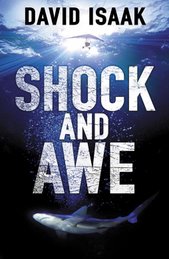I knew McKee’s philosophy on story building, be it screenplay or novel: sit and think about the structure before you begin writing. Make outline after outline (on yellow legal pads, mind you), and once the story structure is unassailable and the characters are nailed down in detailed notes, begin writing.
What I asked him about is the other approach—find an image, a situation, a character—that calls to you as a writer, and begin writing to discover your story.
“That doesn’t work,” he said.
“It’s how Faulkner said he worked,” I said.
McKee shrugged. “Artists lie all the time. Nobody’s ever written a successful story like that.”
Well, if McKee is right, then an awful lot of writers tell exactly the same lie. Faulkner’s famous “muddy underpants” story isn’t unusual. Philip Roth has described writing for up to six months at a time before he finds an image, a paragraph, or a situation that can act as a point of departure. E.L. Doctorow began what became Ragtime by writing about the history of the wall at which he was staring. Donald Westlake began his first Parker novel with a man stomping across the Washington Bridge and snarling at anyone who offered him a lift; the rest of the book sprang from his need to know who the man was and why he had so much attitude. In his Paris Review interview, Martin Amis said:
The common conception of how novels get written seems to me to be an exact description of writer’s block. In the common view, the writer is at this stage so desperate that he’s sitting around with a list of characters, a list of themes, a framework for his plot, and ostensibly trying to mesh the three elements. In fact, it’s never like that. What happens is what Nabokov described as a throb. A throb or glimmer, an act of recognition on the writer’s part. At this stage, the writer thinks, Here is something I can write a novel about.
Novelist and teacher Stephen Koch says (in his excellent book on writing) that you cannot know a story until it’s been told. In other words, only after it has been laid out can you decide what elements belong and which are extraneous; only after you in some sense ‘know’ the story and the characters can you really polish and embellish it for maximum dramatic effect.
I once had someone tell me this issue had been studied, and that about two-thirds of novelists planned their work carefully in advance, with outlines and character-trait sheets, and the other one-third plunged in with an image or a notion, and worked it out on the page.
There are some very successful novelists among the planners; J.K. Rowling has a reputation for plotting out her novels before writing like a general planning a major campaign in foreign territory. Elizabeth George’s book Write Away explains her own approach, which is to plan right through the end before starting to write. (George is very specific, however, about the fact that this is only her way of working, and that it shouldn’t be taken as any sort of a rule.) And most ‘how-to-write-a novel’ books take a similar tack—but, then, it’s probably hard to write a how-to book whose main advice is to flounder your way through.
I think McKee is wrong: not all successful writers know the details of their plots before they begin. But I can’t see how we will ever know for certain, given that McKee’s corollary is that anyone who says they don’t do detailed planning is lying.
And I suppose fiction writers by their nature are liars. In my next post, I’ll talk about how I build a story, and ask how you go about building yours. (Don't gnaw your nails to the quick while waiting, even though I'm sure it's pretty suspenseful.)



3 comments:
Wow! You sat down with McKee and survived!
Maybe he's the one who's lying.
roger
He liked my cowboy boots and wanted to know where I bought them (Boot Barn, if you care). I'm guessing that's all that kept him from taking my head off.
In a couple of days I'm going to post about how I put together a story--and then I'm going to politely ask how everyone else goes about it. Including both of you, Roger...(see my next post)
The funning thing about McKee's "detailed planning" is that step-sheets and outlines are really LESS DETAILED forms of writing. Abstractions.
I think it's true that novelists all do some kind of "planning." The question is whether or not it comes before, after they begin drafting, and whether or not this planning takes place in their head or on paper.
Can't wait for Part II.
Post a Comment